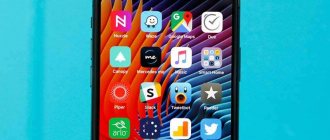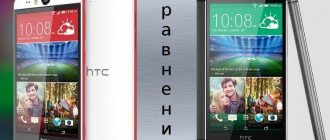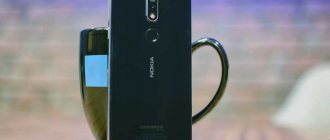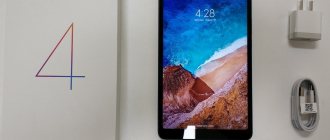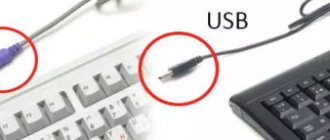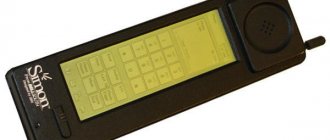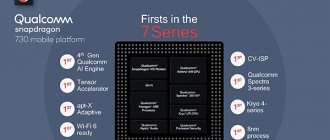Design
The device has a completely plastic body and a removable back cover. The latter has a shiny textured surface that imitates metal very well. Of course, the lid doesn’t keep your hand cool, but it looks very decent.
The smartphone is really pleasant to hold in your hands, both in terms of tactile sensations and in terms of its weight and size characteristics.
Here, by the way, it’s a good idea to compare with competitors. Still, a 5.7-inch screen is already a certain risk area in terms of ease of use for any mobile device.
| Length | Width | Thickness | Weight | |
| LG G4 Stylus (5.7'') | 154,2 | 79,3 | 9,6 | 164 |
| LG G3 Stylus (5.5'') | 149,3 | 75,9 | 10,2 | 163 |
| Asus Zenfone 2 ZE550ML (5.5'') | 152,2 | 77,2 | 10,8 | 170 |
| Meizu MX4 Pro (5.5'') | 150,1 | 77 | 9 | 158 |
Yes, the device is quite large and it is not suitable for lovers of miniature devices. And yet the dimensions of the case are moderate compared to similar solutions from competitors.
The front panel is not particularly remarkable. The side frames are small, the display fits well on the front side of the smartphone.
At the top there is a standard set of elements: a metal mesh covering the earpiece, an LED event indicator, a front camera, light and proximity sensors.
There is empty space under the screen, except for the manufacturer's logo. Oh, and these South Korean companies love to put their brand name in the most visible place. So that everyone knows!
Touch buttons have moved to the system interface and can be configured in detail from the menu, which is important and necessary. By the way, in terms of the level of customization of control elements (navigation keys, keyboard, etc.), LG devices are ahead of many of their competitors. Here you can configure additional buttons on the keyboard, its height, the input method, intelligent prompts - in general, you quickly get used to the good things, but when you switch to other devices, you really miss all this. I know from my own experience.
An oleophobic coating is present and it does a fairly good job of resisting fingerprints. Not like the flagships, of course (it’s also the most efficient), but still not bad.
The stylus is hidden at the top end of the device. It has a small notch, so it can be easily removed and securely fixed in its pocket. You have to try hard to lose it.
Right at the top there is a microphone hole and a 3.5 mm audio output for connecting any standard headphones.
At the bottom there is another microphone hole and a Micro USB connector.
Traditionally for South Korean smartphones, all the smartphone controls are located on the back side.
The keys are easy to press even blindly, there are no problems with this.
You quickly get used to this arrangement of buttons, and I have already said many times that LG managed to create an alternative, and most importantly, convenient way to control gadgets. Products from Asus have some developments of this kind, but they cannot be compared with the Koreans.
To the right of the main camera there is an LED flash, and on the left side there is an infrared sensor, designed for faster and more tenacious focusing when photographing. Looking ahead a little, I will say that there are no problems in this regard. Autofocus really does its job to the fullest.
Closer to the bottom edge there is a hole for a multimedia speaker (with a power of 1 W, by the way). The sound is not bad, the volume is quite high, but not maximum. You can miss a call unless you are on a noisy street and when your device is littered with things in your bag or backpack.
The back cover is removed, revealing slots for SIM cards and memory cards, and also provides access to a replaceable battery. The 3G network is caught on any of the cards and configured from the menu.
Review of LG Q Stylus+ – budget smartphone with stylus and NFC
We are already accustomed to the fact that smartphones with a stylus cost users a large amount of money. However, LG seems to have decided to break this stereotype with its device, which is called LG Q Stylus+. This device, as it turned out, can also please buyers with the ability to use a stylus, but its cost does not exceed 20 thousand rubles. So, let's see what else the above-mentioned gadget can please you with.
Design
The smartphone looks like an ordinary mid-budget smartphone in 2020. In other words, this is an elongated display with quite noticeable frames and indents at the bottom and top. The back panel of the device is made of plastic. This panel, by the way, houses the main camera and a fingerprint sensor. It should be noted that the gadget received IP68 and MIL-STD-810G. In other words, the device is protected from water, dust and falls from low heights.
Display and stylus
In addition, the device boasts a 6.2-inch display with a resolution of 2160 by 1080 pixels. The aspect ratio is 18:9. The advantages of this screen include its good color reproduction and high brightness. That is, there should be no problems with reading information in sunny times, and this, of course, pleases.
As we already said, the smartphone supports a stylus. Thus, after the stylus is picked up, the device will automatically open notes in which you can write something. It should be noted that images or other information that was taken with the stylus may be shared on social networks.
Specifications and performance
A chipset called MediaTek MT6750S is responsible for the performance of this device. The graphics accelerator was ARM Mali-T860. The RAM is 4 gigabytes, and the internal storage capacity is 64 GB. In other words, the filling here is average. Thanks to these parameters, the user can run many games, but they will most likely have to reduce the graphics. Regular applications, which, by the way, include the browser, launch without any particular difficulties. It should be noted that in the AnTuTu benchmark the smartphone was able to score 65 thousand parrots.
The gadget's battery capacity is 3300 mAh. It should be said that the battery can be charged using fast charging. There is also a slot for a memory card up to 256 gigabytes. It is also worth noting that manufacturers have equipped their device with an NFC module.
Cameras
The main lens can please you with a scanner whose resolution is 16 megapixels. The front camera has an 8-megapixel sensor. As expected, the device can only take great pictures during the daytime. If the user shoots at night or in the absence of lighting, the quality of the photos will drop.
Price list
You can buy the above-mentioned smartphone for about 15-19 thousand rubles. The price tag, of course, can really become a barrier to purchase, because the gadget does not have a powerful filling, however, to justify the device, we can say that it acquired a stylus, unlike other mid-budget devices. Let us remind you that many devices with a stylus cost about 50 thousand rubles.
Display
The smartphone has a very large screen with a diagonal of 5.7 inches and regular HD resolution (1280 x 720 pixels). The pixel density is low - 257 ppi, which makes it easy to distinguish individual pixels. The screen is average in this regard.
The screen is made using full lamination technology (Inn-Cell Touch), that is, there is no air gap between the layers and the user touches the image itself with his finger, and not the protective glass above it, as was the case before.
Color rendition, contrast, brightness - everything is in order here. Viewing angles are good.
The screen, of course, goes blind in the sun, but you can continue to work successfully with the content. Not critical.
LG Stylus 3 (Stylo 3) showed at CES 2020
LG Stylus 3 was announced last month, but was shown on January 5, 2020 at the annual CES 2020 exhibition. Interestingly, in the American market the new product was called Stylo 3, but the manufacturer does not explain the reason for the renaming. The new smartphone is one of the few solutions that offers touch control using a stylus.
The body of the new LG Stylus 3 is made of a metal frame and a plastic back cover, which is also removable and provides access to the removable battery. All edges are rounded.
The front part of the mobile device does not stand out in anything unusual. On it there is the usual set of sensors and the front camera eye, and to the right of them is the earpiece grille. The manufacturer's logo is printed at the bottom.
The rear panel has one camera, and under it there is a flash and a fingerprint scanner, which also doubles as a power button. Even lower is the company logo, and in the lower left corner is the main speaker grille.
The manufacturer decided to leave the right side edge without any elements. In turn, the left side received a volume rocker.
At the bottom of the case there is a microUSB port, a hole for a conversational microphone and a standard 3.5 mm mini-jack connector.
The upper part has a special connector for the stylus. There is a edging along the contour of the body, which stretches to the bottom and ends at the corners.
The LG Stylus 3 screen occupies 72.1% of the front panel and is made using IPS technology. The display diagonal is 5.7 inches with HD 720p resolution and 258 ppi pixel density. The screen module is covered with curved 2.5D glass.
LG Stylus 3 is powered by an octa-core MediaTek MT6750 processor clocked at 1.5 GHz. The amount of RAM is 3 GB, and the flash drive has a reserve of 16 GB, which can be expanded if necessary with a MicroSD memory card. The stylus has a noticeably smaller tip with a diameter of 1.8 mm than the previous model. The mobile device is powered by a removable 3200 mAh battery, which means a fairly long battery life.
The resolution of the main camera of LG Stylus 3 is 13 megapixels. In low light conditions, an LED flash will come to the rescue. The sensor supports autofocus, touch focus, face detection and panorama shooting. Video can be recorded at the maximum value [email protected] The front camera module has a resolution of 8 megapixels, but there is information that the Stylo 3 model will have such a front camera, while the Stylus 3 will offer a 5 megapixel sensor.
The LG Stylus 3 runs on the Android 7.0 Nougat operating system, which is not so common in entry-level solutions, but in addition it supports FM radio.
Unfortunately, the manufacturer is silent about the price and start date of sales of the new device. Based on the technical characteristics, the estimated price of LG Stylus 3 in Russia will be about 15,000 rubles. The smartphone will come in titanium gray and rose gold color options. By the way, the South Korean manufacturer announced an improved model LG Stylus 3 Plus, but nothing is known about the device.
Specifications of LG Stylus 3 (Stylo 3):
- Operating system: Android 7.0 Nougat, LG UX
- Screen: 5.7 inches, IPS, HD 1280 x 720 pixels, 258 ppi, In-Cell Touch, 72.1%
- Processor: 64 bit, 8 cores, MediaTek MT6750, up to 1.5 GHz
- RAM: 3 GB
- ROM: 16 GB, microSD
- Camera: 13 MP, flash
- Front camera: 8 MP
- Wireless interfaces: LTE, FM radio, Bluetooth 4.2, Wi-Fi (802.11b/g/n), GPS
- Ports: microUSB 2.0, mini-jack 3.5 mm
- Additional: fingerprint scanner, stylus
- Battery: removable, 3200 mAh
- Dimensions: 155.6 x 79.8 x 7.4 mm
- Weight: 149 grams
Specifications LG G4 Stylus (model H540F)
You are probably aware that the smartphone is not the company’s first product of this kind. Last year, the LG G3 Stylus was revealed to the world, with a design similar to, of course, the G3. Everything went as usual this time too.
In this regard, I think we should compare the specifications of the current device with its predecessor. Thus, we will find out what has changed for the better and what has worsened. Unfortunately, this also happened.
| LG G3 Stylus | LG G4 Stylus (model H540F) | |
| CPU | MediaTek MT6582 @ 1.3 MHz (4 Cortex-A7 cores) | MediaTek MT6592 @ 1.4 GHz (8 Cortex-A7 cores) |
| Video accelerator | Mali-400 MP2 | Mali-450 MP4 |
| RAM | 1 GB | 1 GB (450 MB free) |
| Built-in memory | 8 GB | 16 GB |
| Memory card support | Micro SD up to 32 GB | Micro SD up to 32 GB |
| Display | IPS, 5.5'', 960 x 540 (200 ppi) | IPS, 5.7'', 1280 x 720 (257 ppi) |
| Main camera | 13 megapixels | 8 megapixels |
| Front-camera | 1.3 megapixels | 5 megapixels |
| Battery | 3000 mAh | 3000 mAh |
| OS (out of the box) | Android 4.4.2 | Android 5.0.2 |
| cellular | 2G, 3G | 2G, 3G |
| Wireless interfaces | Wi-Fi (802.11 b/g/n), Bluetooth 4.0, GPS | Wi-Fi (802.11 b/g/n), Bluetooth 4.1, GPS, GLONASS |
| Connectors | Micro USB 2.0 (OTG not supported), 3.5 mm audio output | Micro USB 2.0, 3.5 mm audio output |
| Sensors | Light and proximity sensor, accelerometer, digital compass, IR port | Light and proximity sensor, accelerometer, digital compass |
| SIM card form factor | Micro SIM (2 pcs.) | Micro SIM (2 pcs.) |
| Water and dust protection | No | No |
| release date | August 26, 2014 | 1 Apr. 15 |
Frankly speaking, the hardware is weak and does not at all correspond to even the average budget level for 2020.
Judge for yourself! 1 GB of RAM, 32-bit processor (released, by the way, in November 2013!), no support for LTE and 802.11 ac networks. Finally, the camera has also decreased in comparison with the previous model from 13 to 8 megapixels. Obviously, 5 megapixels have crept to the front side. All this looks completely bleak, especially against the backdrop of numerous Chinese offers, where 2 GB of RAM, 64-bit processors and LTE support are already an established norm.
In some Western markets, our device received the name LG G Stylo and a slightly different filling: a 64-bit Qualcomm Snapdragon 410 (8916) processor with a frequency of 1.2 GHz and 4 Cortex-A53 cores, an Adreno 306 video accelerator, 4G support (FDD LTE 2, 4, 12). Agree - this is somehow more fun.
In addition, the H630D model is available on the Kazakhstan market with almost identical specifications. Russia in the last carriage.
LG Q7, LG Q7+, LG Q7a - specifications and comparison
LG Q7 | LQ Q7a | LG Q7+ |
|
|
|
So, we immediately notice that the performance has not changed at all, so we won’t talk about it anymore. But the screens have changed; in the Q Stylus line they have become larger, but their quality has most likely deteriorated, since the pixel density has become much lower. But we won’t make hasty conclusions, since we haven’t seen these smartphones yet. In the May line, the display diagonal was 5.5 inches, which is 0.7 inches smaller, and the screen quality was definitely up to par.
Now we need to figure out the cameras, but even here, not everything is clear yet. The manufacturer did not specify either the sensor or the aperture, which means that in essence we are just looking into the water. But we can assume that the cameras will be approximately the same for both lines, since the main difference is in the screen and something else; we’ll leave this for the end of the article to make it more interesting. Q7 smartphones do not stand out for their photo abilities and therefore the pictures turned out to be mediocre. Plus, given the very small aperture, which is most likely f/2.2, we can conclude that phones simply won’t be able to take pictures at night. But in good lighting the photos will be quite good. Yes, color saturation and detail will suffer a little. Naturally, none of the phones being compared has a second module. Therefore, there can be no talk of any increase in sharpness or bokeh effect.
Now let's move on to the appearance of the Q Stylus line. Let's start with the most important thing, namely their protection. All phones are protected according to the American military standard MIL-STD-810G, so they will be very difficult to break. But only Q Stylus and Q Stylus+ have IP68 protection. All cases are made of metal and look very cool. There is a fingerprint scanner and camera on the back panel, and a huge elongated display on the front. So what comes with such a big screen? Of course the stylus! How long have we not had phones with it... It would seem that the name of this line speaks for itself, but until recently we did not believe that LG would do this. So far, we know nothing about its capabilities and hope that it is not just a wand with which you can control your smartphone. It would be good if the stylus had some functionality.
Performance
On this point, the smartphone disappointed the most. Typically, all LG smartphones have good optimization and good operating speed. I don’t mention glitches or application crashes at all - this has practically never happened to South Korean devices in recent years. So, the G4 Stylus is a real black sheep in this regard.
The device is slow. When you open any applications, the device immediately starts thinking.
It takes about 2-3 seconds to open standard utilities, and up to 6-8 seconds for third-party ones. Switching between programs (multitasking) is also not a quick process.
I want you to understand that the interface animation works tolerably well. The main problem is the thoughtfulness of the device and this is really annoying.
In addition, it was rare, but still crashes from applications occurred. Sudden, unexpected and merciless. This clearly does not add any advantages to the positive experience of use.
As for system benchmarks, the test results can be found below.
The device performed well in toys. All modern games run at medium settings and you can even play them quite comfortably. In this case, the device behaves well and you kind of forget about the cost of the hardware installed inside.
Cameras
The front sensor has grown to 5 megapixels compared to its predecessor and can take photos in a resolution of 2560 x 1920 pixels. Various convenient automatic shutter release modes are available: by voice command, by gesture, using the buttons on the rear panel, or by pressing a touch key in the viewfinder interface.
In addition, the front camera can record HD video.
For some inexplicable reason, the main camera was reduced from 13 megapixels (as in the LG G3 Stylus) to 8. From a consumer point of view, this is devoid of any logic. The maximum resolution of images does not exceed 3264 x 2448 pixels.
The quality of the pictures is quite good. We look at the examples below, and take the original photos without resizing from here.
At night and indoors with low light, it is best to take 3-4 photos at a time, as some of them may be blurry. The presence of optical stabilization is stated, but I did not notice its operation at all.
The HDR function is available, however, I did not notice any particular difference in the photo after activating it.
In addition, the smartphone can record videos in a resolution of 1920 x 1080 pixels at 30 frames per second. He does this quite well, as you can see for yourself in the examples below.
There is an example of shooting at dusk.
LG Q-series (2018): surround sound and durability
What a person usually wants from a smartphone, besides the usual replacement for almost all gadgets today - everyone without exception is capable of this. Camera, fast operation, large display, stable connection... Should you expect from a smartphone that it will not break the first time it falls on the asphalt? Utopia. Ability to take notes with a stylus? Too niche topic.
LG has taken the liberty of challenging the above statements and focusing on these things with its fresh mid-range Q-series family.
LG Q7+
LG Q7 and Q7+ have adopted the stated moisture protection parameters (IP68) and durability standards (Military Standard 810G) from the flagship LG G7 ThinQ.
Here it is worth saying a few words about this standard. It was first adopted back in 1962, when even science fiction writers had not yet dreamed of smartphones (the prototype fantasy of a tablet computer from Star Trek was still four years away). The current version, to which the LG Q7 and Q7+ correspond, MIL-STD-810G, was written in 2008. It involves numerous tests of the device, ranging from temperature effects to reaction to drops. Bottom line, this doesn't mean you can use the Q7 to hammer nails or use it instead of a Toughbook on geological expeditions - but you don't need to shake every time it falls out of your pocket onto the floor. At least, the probability of breaking a smartphone in these situations is noticeably lower than that of competitors.
LG Q7+
What does IP68 dust and moisture protection class mean? It’s even simpler here: the first number of the marking indicates complete dust resistance, the second indicates that the device will operate for up to half an hour in fresh water at a depth of up to one and a half meters. At the same time - pay special attention to this - the LG Q7 and Q7+ retain a mini-jack (3.5 mm) for headphones. An analogue audio jack for normal protection against water penetration is not a hindrance!
Q-series models have advanced in the direction of security and strength - due to the design of the back of the case not from glass, but from plastic, they are even more resistant to damage when dropped or pressured. And the metal frame around the 5.5-inch display (occupies 78% of the front surface of the smartphone) provides a greater margin of safety for tempered glass.
LG Q7 and LG Q7+, using the same hardware platform (Mediatek MT6750S chip with eight 1.5 GHz cores), differ in the amount of RAM (3 GB versus 4 GB) and non-volatile memory (32 GB versus 64 GB) and camera (13 megapixels and 16 respectively).
LG Q Stylus+
LG Q Stylus+ has its own accent, indicated already in the very name of the smartphone. This is a larger smartphone - no longer with a 5.5-inch, but with a 6.2-inch FHD+ FullVision display (resolution 2160 × 1080 pixels), which responds to touches not only of fingers, as is customary for almost all modern gadgets with capacitive sensor, but also a stylus. The display format is 18:9, the frames are minimal.
The main feature of the Q Stylus+ is that you can take handwritten notes with the stylus on it even when the display is off! The note or drawing will still be saved. Also, using the stylus (which is hidden in the bottom edge of the case), you can create and personalize GIFs! With a price of 29,990 rubles, this is by far the most affordable smartphone with such wide handwriting input capabilities.
LG Q Stylus+
It is worth mentioning that the Q Stylus+ is also dust- and water-resistant to the IP68 standard and has received a military protection certificate MIL-STD-810G - this smartphone can also be counted on in any weather and in almost any conditions.
LG Q Stylus+
LG Q Stylus+ supports DTS:X technology, providing 7.1-channel surround sound when listening to music, games and watching videos.
All smartphones mentioned in the article are equipped with a microSD card slot with two separate slots for nano-SIM (you won’t have to sacrifice a second SIM card to expand the memory), Full HD displays with an 18:9 aspect ratio and 2.5D glass, an NFC module, a fingerprint scanner, FM tuner and USB Type-C 2.0 port. The battery capacity for Q7/Q7+ is 3000 mAh, for Q Stylus+ – 3300 mAh.
Battery life
The device has a removable battery (a rarity these days) with a capacity of 3000 mAh. Taking into account the relatively undemanding hardware in terms of energy consumption, the device can easily live on a single charge for two days with medium-intensity use and 3-4 hours of screen activity.
Modern devices, including many budget devices, cannot boast of autonomy for more than a day or a day and a half. And the LG G4 Stylus clearly outperforms them in this parameter, which is good news.
Stylus. For what?
I had certain hopes regarding the included stylus. Recently, the situation has developed in such a way that all devices that receive a stylus as an accessory automatically become flagship devices, which are not for everyone. This is because some special, cool functionality is added, unique only for a specific device. Usually this is not just “poking” at the screen, as it was in the days of PDAs and communicators on Windows Mobile, but something more - a whole tool with a bunch of software and hardware chips.
Against the backdrop of all this, LG is releasing a mid-budget device, the G4 Stylus, with a stylus included. Intrigue arises. Has the South Korean manufacturer really created an affordable device with functionality, for example, like Samsung's Note line? Not at all!
The stylus in our smartphone is just a stick with a tip, to which the capacitive display of any modern device reacts. Similar accessories can be bought in a Chinese online store for 30 - 40 rubles. It’s just that in the case of the G4 Stylus, the pen can be put into a special pocket, which is located on the upper end of the case. That's all!
For what? Why? These questions worried me throughout the entire time I was testing the device. Several times I took the pen out of the case and cherished the hope that now everything would work out. I’ll start poking at the screen and understand what the company’s engineers wanted to convey to the consumer by equipping their brainchild with an accessory from the years 2003-2005. Yes, that's exactly what the stick looks like. No modern design. Why bother?
In general, every time, after about 3-4 minutes, I put the stylus back in my pocket and started using the device in the usual way - with my fingers.
This is much more convenient and there is not a single place in the system where the use of the included stylus would be justified. Accordingly, to the question “why?” I still couldn't find the answer.
